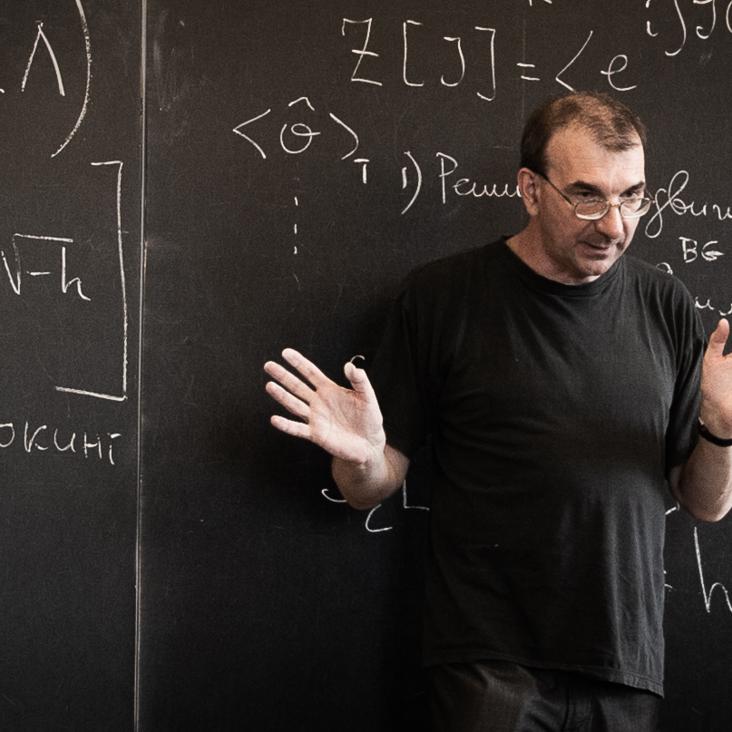Second-order transport, quasinormal modes and zero-viscosity limit in the Gauss-Bonnet holographic fluid
Journal of High Energy Physics Springer Berlin Heidelberg 2017:3 (2017) 166
Abstract:
Gauss-Bonnet holographic fluid is a useful theoretical laboratory to study the effects of curvature-squared terms in the dual gravity action on transport coefficients, quasinormal spectra and the analytic structure of thermal correlators at strong coupling. To understand the behavior and possible pathologies of the Gauss-Bonnet fluid in 3 + 1 dimensions, we compute (analytically and non-perturbatively in the Gauss-Bonnet coupling) its second-order transport coefficients, the retarded two- and three-point correlation functions of the energy-momentum tensor in the hydrodynamic regime as well as the relevant quasinormal spectrum. The Haack-Yarom universal relation among the second-order transport coefficients is violated at second order in the Gauss-Bonnet coupling. In the zero-viscosity limit, the holographic fluid still produces entropy, while the momentum diffusion and the sound attenuation are suppressed at all orders in the hydrodynamic expansion. By adding higher-derivative electromagnetic field terms to the action, we also compute corrections to charge diffusion and identify the non-perturbative parameter regime in which the charge diffusion constant vanishes.Second-order transport, quasinormal modes and zero-viscosity limit in the Gauss-Bonnet holographic fluid
(2016)
From strong to weak coupling in holographic models of thermalization
Journal of High Energy Physics Springer Verlag 2016:151 (2016) 1-52
Abstract:
We investigate the analytic structure of thermal energy-momentum tensor correlators at large but finite coupling in quantum field theories with gravity duals. We compute corrections to the quasinormal spectra of black branes due to the presence of higher derivative R2 and R4 terms in the action, focusing on the dual to N= 4 SYM theory and Gauss-Bonnet gravity. We observe the appearance of new poles in the complex frequency plane at finite coupling. The new poles interfere with hydrodynamic poles of the correlators leading to the breakdown of hydrodynamic description at a coupling-dependent critical value of the wave-vector. The dependence of the critical wave vector on the coupling implies that the range of validity of the hydrodynamic description increases monotonically with the coupling. The behavior of the quasinormal spectrum at large but finite coupling may be contrasted with the known properties of the hierarchy of relaxation times determined by the spectrum of a linearized kinetic operator at weak coupling. We find that the ratio of a transport coefficient such as viscosity to the relaxation time determined by the fundamental non-hydrodynamic quasinormal frequency changes rapidly in the vicinity of infinite coupling but flattens out for weaker coupling, suggesting an extrapolation from strong coupling to the kinetic theory result. We note that the behavior of the quasinormal spectrum is qualitatively different depending on whether the ratio of shear viscosity to entropy density is greater or less than the universal, infinite coupling value of ℏ/4πkB. In the former case, the density of poles increases, indicating a formation of branch cuts in the weak coupling limit, and the spectral function shows the appearance of narrow peaks. We also discuss the relation of the viscosity-entropy ratio to conjectured bounds on relaxation time in quantum systems.From strong to weak coupling in holographic models of thermalization
(2016)
On the universal identity in second order hydrodynamics
Journal of High Energy Physics Springer Nature 2015:3 (2015) 7


